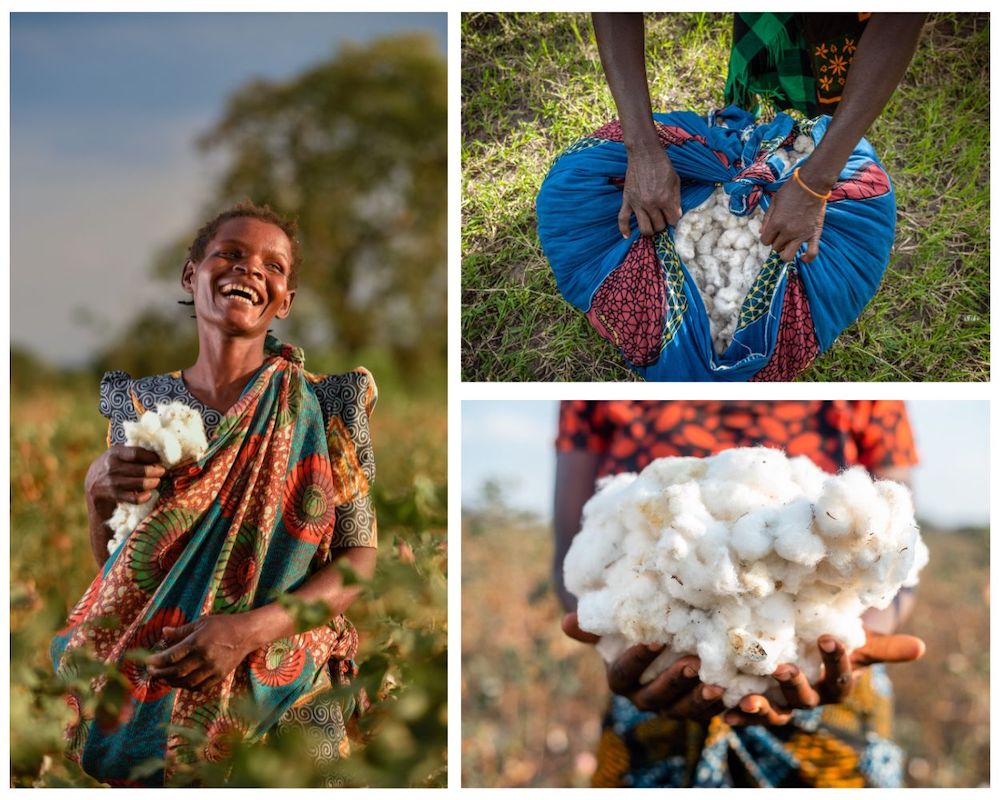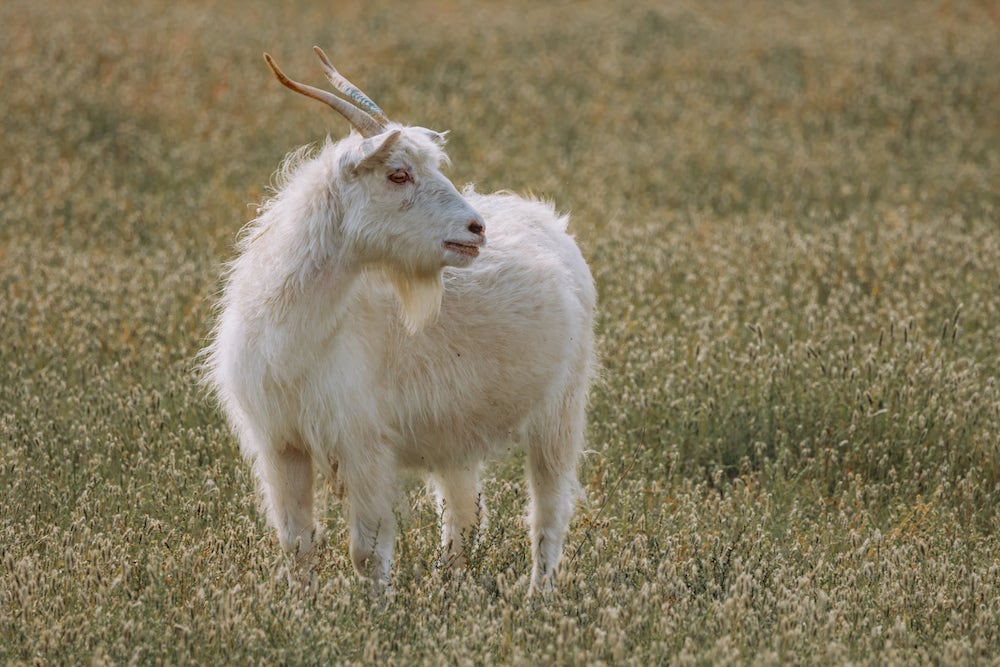Interview with Ms. Tina Stridde – Managing Director At Aid by Trade Foundation
The Aid by Trade Foundation (AbTF) was established in 2005 by the German entrepreneur Prof. Dr Michael Otto. Under the credo to help people help themselves through trade it stands for an innovative approach that focuses on activating market forces instead of relying on charity. Together with various partners from the textile industry, governmental and non-governmental organisations, the Foundation makes a significant contribution towards combatting poverty and protecting the environment.
1. Please let us know more details about Aid by Trade Foundation, its history and success story.
With its standards Cotton made in Africa, Cotton made in Africa Organic and The Good Cashmere Standard, The Aid by Trade Foundation (AbTF) puts its goals into practice. Instead of collecting donations, an alliance of textile companies and brands is formed, which purchases the sustainable raw materials at market prices and pays a licence fee for the usage of the sustainable claims and labels.
The Foundation reinvests this income from licences in accordance with its Foundation goals paying for verification, implementation, and training for the farmers and herders as well as for monitoring and evaluation.
2. What is Aid by Trade Foundation’s mission and vision?
The aim of the Foundation is to help people to help themselves through trade, thereby promoting environmental protection and securing the livelihoods of future generations. With the support of various partners from industry, government, research, and NGOs, the foundation focuses on aid by trade.
Beyond supporting sustainable cultivation of agricultural and forestry products, the long-term aim is to further develop the value chains in those countries where the raw materials are produced in order to generate maximum added value.

3. Which kind of Services you offer to textile manufacturers and professionals in MEA region?
Cotton made in Africa, as the largest sustainability standard for African cotton has the task to market sustainable African cotton to all global textile production markets. This cotton provides many chances for the textile industry in the MEA region because a certified raw material from Africa can add a lot of value to a product which is made in the region.
4. Explain more about the cotton made in Africa project and what exactly you are following.
Cotton made in Africa (CmiA) was the first standard of the AbtF, it was introduced in 2005. It is committed to environmental protection and improved living and working conditions of smallholder cotton farmers in sub-Saharan Africa. Today CmiA works with more than one million smallholder cotton farmers in 11 countries across Africa that produce 690,000 tons of CmiA-verified cotton.

5. How do you evaluate African countries’ potential in cotton production? How do you evaluate African cotton quality and specification?
In average African cotton is medium to upper-medium quality with a staple length between 26 to 31 mm. It has less contamination compared to other cotton from India or Pakistan and can be used for a large variety of product groups.
The African-producing countries have played a very important role in contributing to the global cotton production and most certainly this will continue in the future.
African cotton is a very important raw material for textile chains worldwide. The African continent produces approximately 1.5 Mio tons of cotton, 40% of the African cotton production is CmiA verified.
6. Is there any opportunity for international cotton processing companies to invest in Africa?
According to our observation, most of the investments are being made in CMT and do not cover the direct processing of the cotton which is done by spinning mills. Thus Africa cotton is mostly spun in Asian markets and then returns to Africa as yarn and/or fabric to be further processed into textiles.
The potential to increase the value addition in Africa is certainly very high.
7. The good cashmere standard is another part of your activity, let us know more about this standard.
In 2020 the AbTF launched „The Good Cashmere Standard” (GCS) as the world’s first independent standard for sustainable cashmere.
It was created to improve the welfare of cashmere goats as well as the economic, social and ecological conditions experienced by cashmere farmers, their families and communities in Inner Mongolia.
The standard specifies a clear and comprehensive set of criteria for sustainable cashmere production. Regular checks are performed by independent auditors in order to monitor compliance with these criteria. In 2022 9,400 cashmere farms were part of GCS producing around 1,900 tons of dehaired GCS certified cashmere.

Why Cashmere fibers are important?
Cashmere is prized for its softness, lightness, and its excellent insulating properties. Thus, it has become an increasingly important raw material for fashion brands in all major textile consumption markets.
Cashmere was once a purely luxury product, but a reduction in the cost of cashmere paired with a sharp increase in demand have meant that farmers have struggled to meet both demand and price expectations in a sustainable way.
The Good Cashmere Standard aims to provide a solution to this vicious circle by promoting more sustainable practices within cashmere farming, which protect the welfare of the cashmere goats, the quality of their wool, the environment they live in and the farmers who take care of them.
8. How much cashmere produce annually?
The global annual cashmere production is around 25,000 tons, the most important countries for cashmere production are China (Autonomous Region of Inner Mongolia) and Mongolia. We see a continuous trend in the consumption of cashmere fibres, it is no longer a high-end luxury good but is also offered by retailers and brands in the medium and even lower price range, it is then often mixed with other fibres e.g. wool or cotton.

9. How do you evaluate textile and fashion industry in Middle East and Africa and its potentials for Future. Do you have export to this region?
As a standard organization working in cotton as well as in cashmere, we do not trade raw materials or textiles. Both raw materials cotton as well as cashmere are produced by the farmers and then exported to all important production markets in the textile industry. We control the usage of the sustainable raw material through our well-developed tracking systems providing full transparency to retailers and brands using our raw materials.
10. COVID 19 and climate crisis shows us we should rely more on sustainability and green products, how we can improve sustainability in fashion and textile industry? Do you have any plan in ABT Foundation for producing sustainable products?
Today, brands and retailer already have a great variety of sustainable raw materials to choose from, sustainable cotton is available in large quantities and can be processed in all relevant textile production markets. The same holds true for animal as well as for man-made fibres.
There a many schemes and standards out there that provide reliable and trustworthy certifications for the textile industry. So, to further improve sustainability, brands and retailers have to increasingly integrate those sustainable raw materials into their supply and make long-term commitments especially also to decrease the carbon footprint of their products.



















